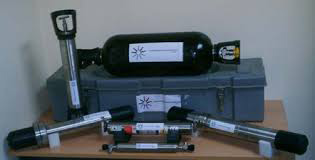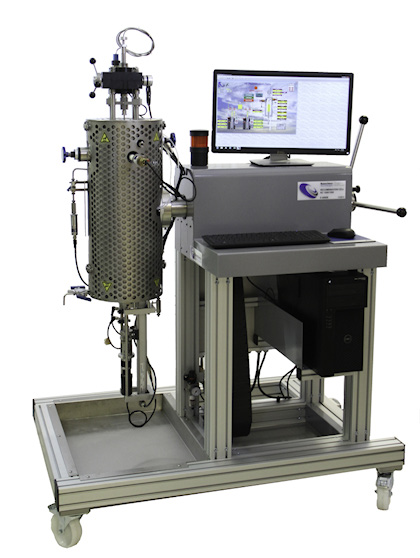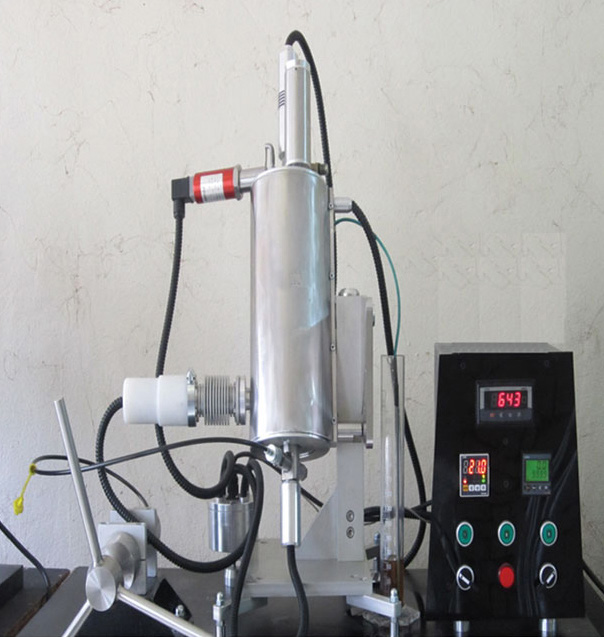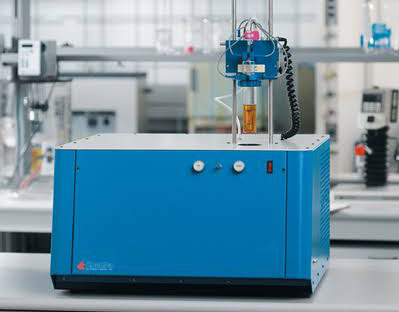The two most common types of sampling for reservoir fluids are either from down hole or from the separator during well test. It is essential to ensure that good samples are obtained, as the subsequent PVT analysis results can only be as good as the samples will permit. This applies to any form of laboratory analysis. The key points are to make sure you take the right type of samples, ensure they are taken properly by experienced personnel, ensure all the relevant data applying to the samples is recorded, take the samples at the most appropriate time, and take enough samples for all analyses and for multiple validation to check consistency.


All the parameters for this step have been obtained from the previous steps, and the sampling data sheets. As standard, the separator GOR from the well test, is corrected for the laboratory measurements of gas compressibility and separator gas gravity. From the corrected separator GOR we can calculate what volume of separator liquid this corresponds to (at separator conditions). After this the cell can be heated up to reservoir temperature, and recompressed to same or above reservoir pressure, and the full PVT study performed.

Wettability is defined as the tendency of one fluid to spread on or adhere to a solid surface in the presence of other immiscible fluids. The importance of wettability has long been recognized as affecting the measurement of special rock properties. Wettability is a major factor controlling the location, flow, and distribution of fluids in rocks. Undoubtedly, in situ wettability is one of the most difficult reservoir parameters to quantify. It is virtually impossible to core a reservoir rock and be certain that its in situ wetting preference has not been altered. The goal of the core analyst must be to mitigate wettability alteration during core acquisition and sample preparation. It may be possible in some rock types to restore the original wetting preferences of the rock by cleaning, saturation with reservoir fluids, and aging. The most common methods to measure wettability include USBM, Amott and variations on these basic methods review the use of the dynamic Wilhelmy plate for measuring the wetting character of oil, brine, and rock systems. This method is simpler and less operator-dependent than standard contact-angle procedures and can be used to examine the effects of contaminants such as drilling-fluid components.

In this test the recombined sample, contained in the high pressure PVT cell, is taken from reservoir pressure or above and the pressure reduced in increments to a pressure below its dew point or bubble point. All the equipment is accurately calibrated so the volume of the sample is known at every step allowing the relevant parameters to be calculated. With black oil, the test is performed in a blind cell and is very similar to the bubble point mentioned earlier but with more steps and measurements being taken.
These tests are performed differently for oil and condensate. With a black oil you have the sample again in a blind cell, at a pressure at or above reservoir pressure. The pressure is reduced using the pump to below bubble point, and agitated for a period of time until it has stabilized. At this point, after taking volume measurements, all the liberated gas is pushed off with the pressure kept constant. The gas passes through a receiver to catch any liquid that may drop out, and is then collected in the calibrated gasometer for analysis.
With a gas condensate a constant volume depletion is performed. Here as the name suggests, you keep the volume of the sample constant. The volume used is the one at dew point, which has been determined during the constant composition expansion. The first stage is done at a pressure slightly above dew point pressure as it is not practical to do it at the actual dew point. A small portion of the reservoir fluid is pushed off at constant pressure, again through a receiver and collecting the gas in the calibrated gasometer. At the end of this push the only thing that has changed is the volume of sample in the windowed cell. The volume is therefore increased back to the original volume at dew point, by removing mercury from the cell. This of course leads to a reduction in pressure to below the dew point, meaning that liquid condenses out of the gas.
The rolling ball viscometer is designed to determine the viscosity of bottom-hole and surface oil samples at elevated temperature and pressure. It uses the rolling ball principle where the roll time of a ball is used to obtain viscosity data. Viscosity values are then obtained by correlation of the measured data with curves of fluids with known viscosities. The viscometer consists of a calibrating barrel equipped with a latch at its upper end and a detector at its lower end. The latch permits to trap and release the ball while the detector detects the arrival of the ball allowing the roll time to be determined. The viscometer features a jacket for circulating heating fluid around the chamber to ensure a constant and homogeneous temperature of the sample.

Using a variety of both standard and innovative procedures, Coreserv's crude oil assay testing laboratory provides the molecular and chemical characterizations of crude oil. Information is generated on the boiling-range and on each requested fraction within the range using a variety of physical testing procedures. We measure Sulphur content, nitrogen content, viscosity, bottom sediment & water, density, API, salt content, pour point and metals content as part of the normal analysis of the general properties of the crude oil. We also analyse the crude oil off-gas and provide you with full hydrocarbon analysis including key health and safety data such as hydrogen Sulphide content and any mercury content.

Formation and produced water testing laboratory helps client to understand the chemistry of reservoir formation water, produced water, and any potential impact on the environment.Produced and formation water analytical testing services include 10 ion compositional analysis to determine tendency for scaling and corrosion. Detailed trace metals analysis helps to establish the degree of water toxicity before discharge into the environment. Toxicity evaluation is provided for drill cuttings and drilling mud samples. The produced water lab provides extensive testing for hydrocarbon content, including BTEX evaluations. Produced water naturally contains some oil and soluble oil products. Oil field additives and other naturally occurring substances and elements may be present in the produced waters.
Copyright © 2018 - All Rights Reserved - www.core-serv.com